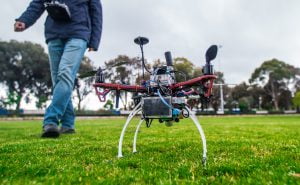The ultimate guide to professional video production.
Introduction
Ah, video production – the fancy, high-budget cousin of homemade cat videos. But what exactly is professional video production? Simply put, it’s the process of creating high-quality videos for commercial purposes. And why is it important in today’s market? Well, in a world where attention spans are shorter than a TikTok dance, video is the perfect tool to capture and retain audience attention.
But quality video production is more than just pointing a camera and pressing record. Success comes from diligent pre-production planning, skillful production execution, and meticulous post-production editing. And let’s not forget the importance of strategic distribution and marketing to maximize exposure and engagement. In this Ultimate Guide, we’ll cover all the necessary components to help you create compelling video content that captures the essence of your brand and message. So grab some popcorn, settle in, and let’s dive in.
Pre-production
Pre-production is an essential phase in professional video production, which involves meticulous planning and a great deal of creativity. In this phase, the video concept is refined and transformed into a tangible plan. The first step in this phase is defining the target audience. This means identifying who the video is meant for, their demographics, interests, and preferences. Understanding the target audience helps in creating content that resonates with them and captures their attention.
Next is developing the concept, which entails putting the video idea into a comprehensive plan. The concept outlines the video’s message, tone, and overall feel. It’s crucial to brainstorm multiple ideas to find what works best for the target audience and the video’s purpose. Once the concept is clear, storyboarding and shot list creation comes next. Storyboarding is an essential step that outlines each shot and sets out the flow of the video. This helps visualize the video’s progression while shot list creation sets a clear picture of required equipment.
In summary, pre-production sets up the video production for success by accurately defining the target audience, developing a comprehensive concept, and creating a detailed plan with clear visualization and shot listings. In our subsequent headings, we’ll look at the essential equipment for the production stage, the importance of organization and file management in the post-production phase, choosing the right platforms for distribution and marketing, measuring the success of the project with meaningful metrics, and the potential benefits of professional video production for businesses and organizations.
Production
Production is the most exciting aspect of professional video production. This is where the concept truly comes alive. Essential equipment such as cameras, lighting, microphones, and other audio equipment must be prepared and taken care of to ensure the best possible visual and audio output.
Working with actors and crew is no easy feat but can be made painless with effective communication and collaboration. The director must be able to effectively articulate what they are looking for in a shot while also taking into consideration the actor’s strengths and weaknesses. The crew, responsible for the technical aspects of the shoot, will assist in bringing the director’s vision to life.
Shooting techniques are important to set the direction of the video. Framing, camera angles and movement, and lighting all play a role in establishing mood and tone. One must also consider continuity and how the shots fit together during post-production.
Remember, this is the time to have fun with the creative direction while ensuring that the final product aligns with the objectives set in pre-production. The production phase is the make or break of video production where the success or failure of the whole project depends on a single shooting day.
Post-production
Post-production is the phase where all the raw footage is transformed into a polished, finished product. This phase is critical, and no corners should be cut. The process involves three primary aspects that must be given equal importance to achieve the desired results.
First, proper organization and file management are crucial in ensuring that the post-production team can effectively identify and access the footage they need. This will not only save time, but it will also result in a cleaner final product.
Second, editing principles and techniques must be implemented to turn the raw footage into a cohesive and engaging story. The editing team must have a good understanding of pacing, continuity, and storytelling to achieve this.
Finally, adding special effects and sound design brings the visuals and audio to life. When used correctly, special effects can enhance the story and grab the audience’s attention. The sound design can also play a huge role in creating a mood and complementing the visuals.
Overall, successful video production doesn’t end with the shooting process. Post-production is just as crucial in creating an engaging and effective final product. So it’s essential to commit the appropriate time and resources to this phase to achieve the desired results.
Distribution and Marketing
Video production is only part of the journey. What you do with your video once it’s complete is just as important as the content itself. Choosing the right platform(s) to host and share your video is essential. Some of the most common video platforms include YouTube, Vimeo, and Facebook. It’s essential to choose a platform that aligns with your target audience and where they are most likely to be present.
Engaging with your target audience is equally important. Social media is a great tool for interacting with your audience and generating buzz around your video. Engage with your audience, answer their questions, share interesting behind-the-scenes stories, and peaks into what’s coming next. Doing so will result in viewers feeling more connected to your brand, increasing loyalty and advocacy.
Finally, maximize exposure through strategic advertising. This gives you the ability to reach a wider audience, targeting those who are most likely to engage with your content. When doing this, it’s essential to be strategic with your targeting, ensuring you reach your intended viewers, and optimize your bidding to work within your budget.
At the end of the day, producing and distributing high-quality video content is essential for businesses and organizations that want to stand out from the competition. Choosing the right platform, engaging with your audience, and maximizing exposure through strategic advertising are all essential steps that should not be overlooked.
Measuring Success
Producing a professional video is a complex undertaking, but it can yield significant benefits. To measure the success of your efforts, you must first establish goals and metrics. These can include measures like engagement rates, click-through rates, and impressions, among others.
Once your video is published, the next step is to analyze viewer engagement. Understanding how viewers interact with your content can help you fine-tune your approach for future productions. Finally, be sure to utilize feedback to refine your work. Soliciting feedback from viewers, as well as your production team, can help you identify areas for improvement and refine your approach over time.
In conclusion, measuring the success of a professional video production requires careful planning and attention to detail. By setting clear goals, analyzing viewer engagement, and utilizing feedback, you can refine your approach and create truly impactful video content.
Conclusion
Professional video production requires several crucial components, including pre-production planning, a talented production crew, and post-production editing. It is important for businesses and organizations to invest in high-quality video production to effectively communicate their brand message and engage with their target audience.
The potential benefits of professional video production include increased brand recognition, improved customer engagement, and higher conversion rates. With these key elements in mind, businesses can successfully create and distribute engaging video content that drives results.
More articles

The rise of mobile video production: tips for success.
In recent years, the world of video production has undergone a transformative shift with the rise of mobile video production. The accessibility and convenience of

Video production ethics: responsibility and impact.
In today’s digital world, video production has become easily accessible to all. It is an exciting time with endless possibilities for creativity and expression. But

Video production on a budget: maximising resources.
Video production on a budget can be quite the challenge. As content needs grow, budgets often shrink or stay the same. Marketers find themselves at